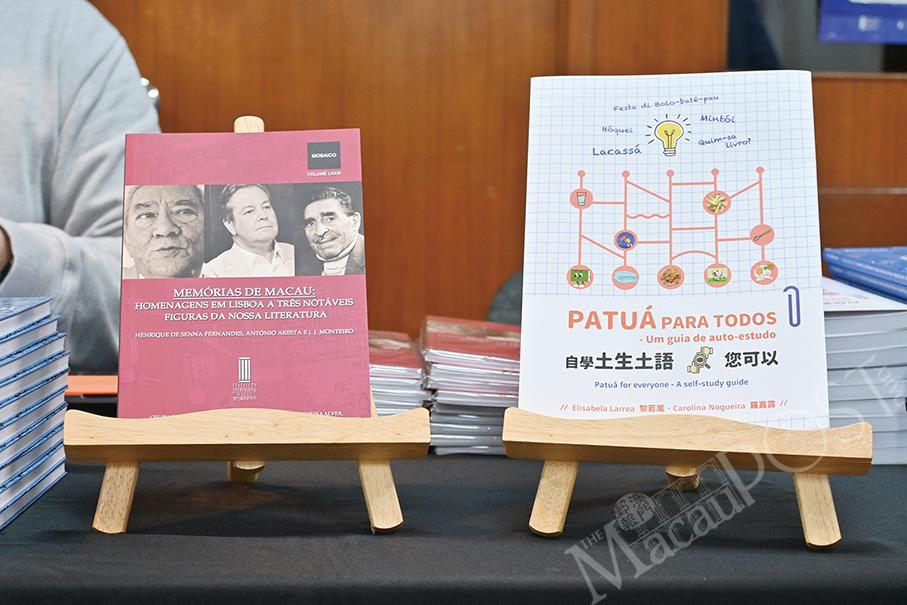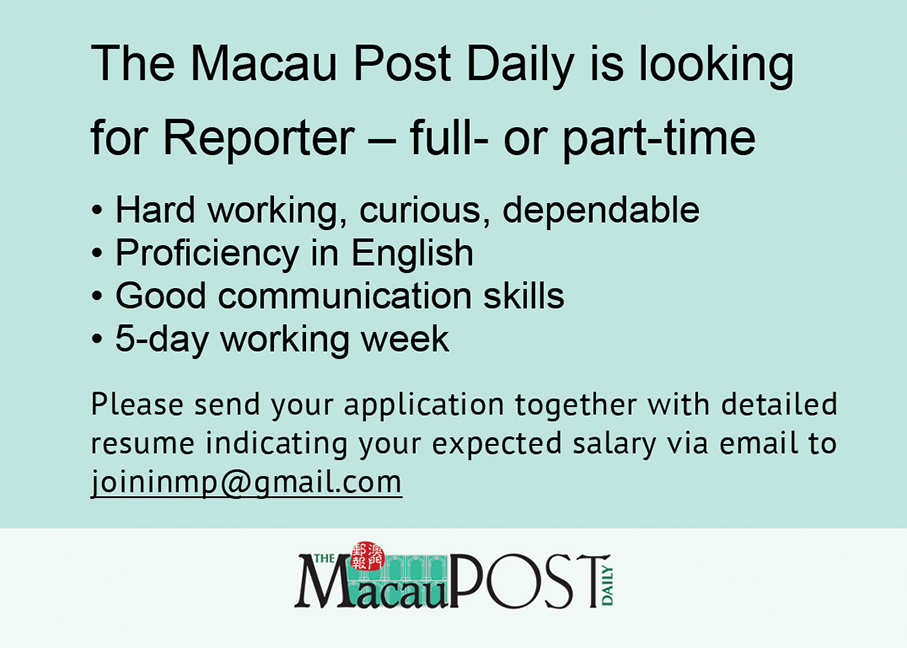Interview by Rui Pastorin
A book launch and presentation of “Patuá for everyone – A self-study guide” was held at the International Institute of Macau (IIM) on Rua de Berlim (栢林街) last night, with Macanese* authors Elisabela Larrea and Carolina Nogueira hoping to generate more interest in and debate on the critically endangered Portuguese-Asian Creole language, as well as to reach a wider audience.
Larrea is a Macanese culture researcher who has also authored “Unchinho de Língu Maquista: Patuá bit by bit – Flashcard book”, while Nogueira is a language teacher and linguist.
During last night’s event, the authors introduced Patuá** and the contents of their IIM-published trilingual (Chinese, Portuguese and English) self-study guide, which targets beginners and has a print run of 300 copies.
Complete with graphics and easy-to-understand explanations, the self-study guide comprises eight themed chapters such as Greetings, Family, Celebrations and Food, the authors pointed out during their presentation. Moreover, grammar points and vocabulary as well as how to use them are also covered by the book, along with facts about Macanese culture. The guide also includes an online pronunciation demonstration, enabling readers to hear the words so that they can pronounce Macau’s Creole correctly.
On writing the book, the authors told the Post prior to the start of last night’s event that during their studies, they noticed that there was a dearth of teaching or learning materials on Patuá.
“That’s why we think that there are a lot of people like us who are interested in the Creole [of Macau], but they do not know how to approach and learn it. That’s why we wanted to create this book, like a first step for people to go into this world of Patuá, so that they can explore more later on”, Nogueira pointed out.
Larrea also told the Post they hope to reach out to a more diverse audience. “Our book is written in Chinese, English, and Portuguese so that people with different language backgrounds, academic backgrounds, or even different ages can learn and have a way to study this Macanese language”.
Larrea added that there are various forms of safeguarding Creole including theatre, music, as well as past literature works, but she admitted that a very systematic approach towards teaching Patuá has so far been “quite rare”. She said that though neither she nor Nogueira are really Patuá experts, they love the language, therefore having tried their best to set up a system and share it with others who are interested in Macau’s very own tongue.
Looking ahead, Nogueira said that both hope to explore all opportunities in advancing the study of Patuá in the future.
The book presentation was part of IIM’s Macanese Evening event, which also saw the launch of “Memórias de Macau: Homenagens em Lisboa à três notáveis figuras da nossa literatura” (“Memories of Macau: Homage in Lisbon to three notable figures of our literature”).
*Customarily, the term “Macanese” refers to Macau’s community of mixed Portuguese and Asian descent, as well as their diaspora, accounting for less than 2.0 percent of the local population. – MPD
**Patuá is Macau’s severely endangered Portuguese-Asian Creole, nowadays spoken by just a few dozen people in Macau and a number of hundreds overseas, in California in particular. – MPD

This photo shows both the “Patuá for everyone – A self-study guide” (right) and the “Memories of Macau: Homage in Lisbon to three notable figures of our literature”. – Photo: Rui Pastorin









